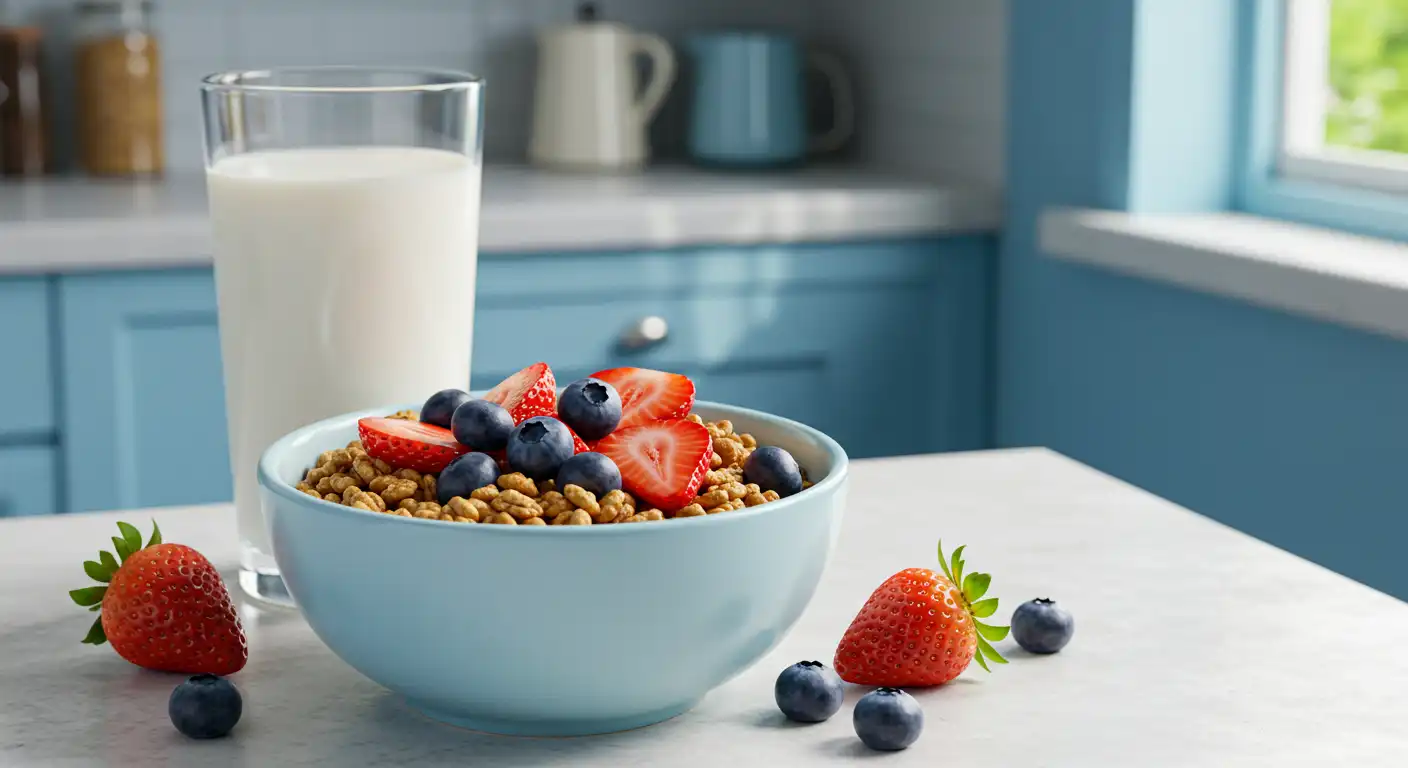Breakfast is often dubbed the most important meal of the day. But are you fueling yourself with the right ingredients to start your morning strong? Enter protein cereal: a revolutionary twist on the classic breakfast staple, designed to boost your energy and nutrition levels.
What is Protein Cereal?
Definition and Concept
It is a breakfast cereal specifically formulated to provide a higher protein content than traditional cereals. While conventional options focus on carbohydrates, protein cereals are rich in muscle-building proteins and cater to active lifestyles or those looking to add balanced nutrition to their mornings.
Evolution of Breakfast Cereal with Protein
Traditional cereals have been around for decades, but most were loaded with sugar and empty calories. With a growing demand for healthier, functional foods, manufacturers started incorporating protein to cater to fitness enthusiasts, weight-conscious individuals, and anyone looking for a nutritious morning meal.
Why Protein Cereal is a Game-Changer
Importance of Protein in Diet
Protein is one of the essential macronutrients your body needs to function. It supports muscle repair, immune health, and satiety. Unlike carbs that burn off quickly, protein provides a steady energy source, making it the perfect morning companion.
Benefits of Protein Cereal Over Regular Cereal
- Keeps You Fuller Longer: The high protein content helps curb hunger, reducing mid-morning snack cravings.
- Balances Energy Levels: Say goodbye to sugar crashes from carb-loaded cereals.
- Supports Fitness Goals: Ideal for those building muscle or managing weight.
Nutritional Breakdown of Protein Cereals
Key Ingredients in Protein Cereals
Protein cereals often feature ingredients like whey protein isolate, pea protein, nuts, seeds, and whole grains. They aim to strike a balance between taste, texture, and nutrition.
Macros and Micronutrients Comparison
Compared to regular cereals, protein cereals:
- Contain 10–20 grams of protein per serving.
- Have lower sugar content.
- Provide a mix of healthy fats and complex carbohydrates.
Protein Content Analysis
A typical serving of it can provide up to 25% of your daily protein needs, depending on your activity level.
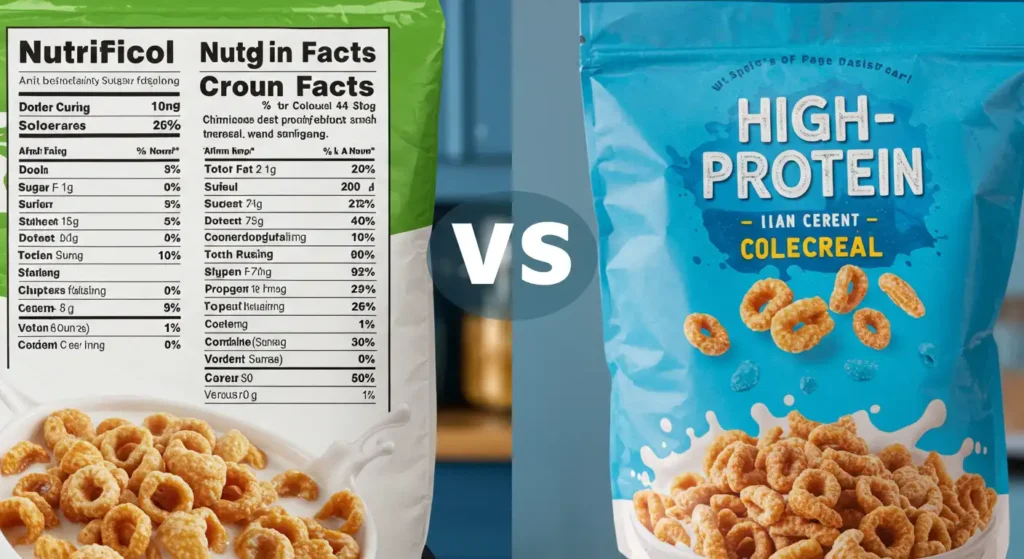
How to Choose the Best Protein Cereal
What to Look for on Labels
- Protein per serving (aim for at least 10 grams).
- Low sugar (less than 5 grams).
- Whole food ingredients (no artificial additives).
Avoiding Hidden Sugars and Additives
Many cereals mask their high sugar content under names like “syrup solids” or “fructose.” Always check the ingredient list to ensure you’re choosing a truly healthy option.
Top Recommended Brands
- Magic Spoon
- Kashi GoLean
- Premier Protein Crunch
Homemade Protein Cereal Recipes
DIY High-Protein Granola
Combine rolled oats, almond butter, protein powder, and seeds. Bake until golden for a crunchy, nutrient-packed cereal.
Simple No-Cook Recipes
Mix Greek yogurt, chia seeds, nuts, and a scoop of your favorite protein powder for an effortless breakfast.
Adding Protein Powders to Your Mix
Boost store-bought cereals by sprinkling a flavored protein powder over your bowl or blending it with milk for added richness.
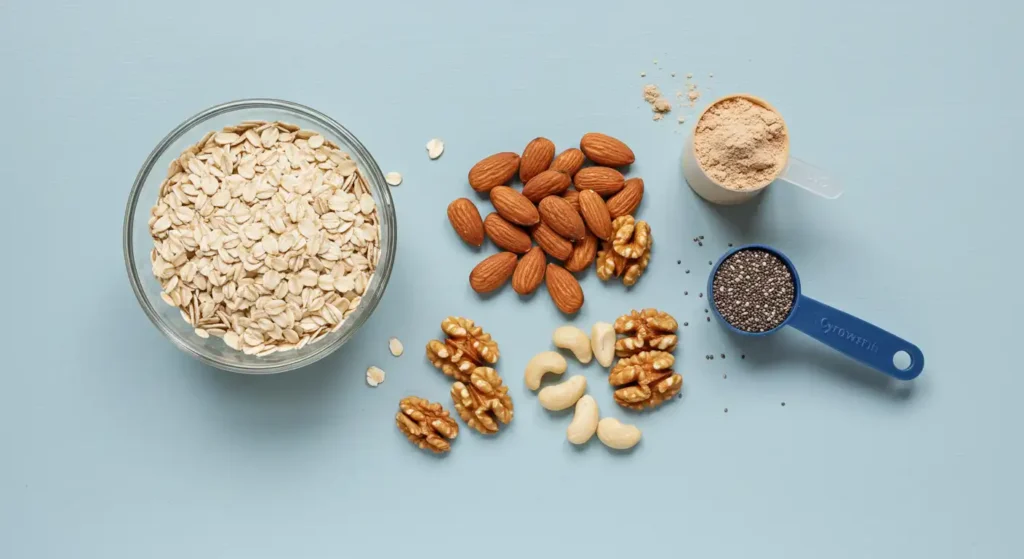
How to Incorporate Protein Cereal into Your Diet
Ideal Times to Eat Protein Cereal
Protein cereal isn’t just for breakfast! Here are some ideal moments to enjoy it:
- Breakfast Fuel: Start your day with sustained energy by pairing It with milk or yogurt.
- Post-Workout Recovery: After a workout, the protein aids muscle repair and replenishes glycogen stores.
- Midday Snack: Replace sugary treats with a nutrient-rich bowl of cereal.
Pairing with Other Foods
To maximize the benefits of It, consider pairing it with:
- Greek Yogurt: Adds creaminess and boosts protein further.
- Fresh Fruit: Bananas or berries add natural sweetness and antioxidants.
- Nut Butters: A spoonful of almond or peanut butter can elevate the taste while adding healthy fats.
Protein Cereal for Fitness and Weight Management
Role in Muscle Recovery
Protein is essential for muscle repair and growth, making it an excellent post-workout option. The combination of protein and carbs replenishes energy levels and promotes muscle recovery.
Impact on Weight Loss Goals
Protein cereal supports weight management by:
- Reducing Hunger Pangs: The protein content helps you feel full longer, preventing overeating.
- Boosting Metabolism: Protein has a higher thermic effect than carbs or fats, helping you burn more calories.
- Encouraging Portion Control: Many protein cereals are pre-portioned, helping you stay within your calorie goals.
Addressing Common Myths About Protein Cereals
Myth 1: Too High in Calories
Some believe protein cereals are calorie-dense, but this isn’t always true. With a focus on nutrient density, these cereals often provide more vitamins, minerals, and protein per calorie than traditional options.
Myth 2: Not Suitable for Kids
While some protein cereals are formulated for adults, many options are kid-friendly. Look for brands with natural ingredients and moderate protein content to suit younger diets.
The Future of Protein Cereals
Innovations and Trends
The protein cereal market is constantly evolving. Trends to watch include:
- Plant-Based Options: Catering to vegans and vegetarians with pea protein and quinoa blends.
- Functional Additives: Cereals enriched with probiotics, adaptogens, and vitamins for added health benefits.
- Customizable Kits: DIY cereal kits allowing consumers to tailor their own blends.
Sustainable and Organic Options
Eco-conscious consumers are driving the demand for sustainably sourced and organic protein cereals. Brands are responding by using recyclable packaging and organic ingredients to appeal to this growing demographic.
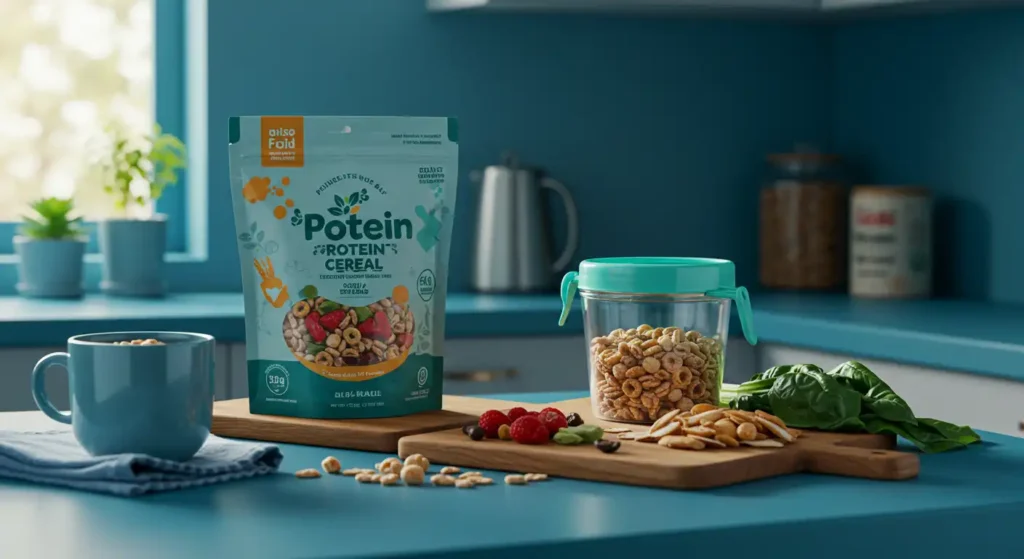
Comparing Protein Cereal to Other High-Protein Breakfast Options
Protein Shakes vs. Protein Cereal
Protein shakes are a popular choice for people on the go, but they lack the crunch and satisfaction of chewing, which makes it a more fulfilling option. Plus, cereal often contains fiber and other nutrients absent in shakes.
Eggs and Avocado Toast vs. Protein Cereal
While eggs and avocado toast are classic high-protein breakfasts, they can be time-consuming to prepare. A protein-packed cereal, on the other hand, offers convenience without sacrificing nutrition, especially when paired with milk or yogurt.
Protein Bars vs. High-Protein Cereal Options
Protein bars are portable and handy, but they often contain added sugars and preservatives. High-protein cereal provides a more controlled serving size and often features simpler ingredients.
Special Diets and Protein Cereals
Protein Cereal for Vegans and Vegetarians
Vegans and vegetarians often struggle to meet their protein needs through traditional breakfasts. Protein cereals made with plant-based proteins like pea or soy are excellent choices for these diets.
Protein Cereal for Low-Carb Diets
Low-carb dieters can benefit from protein cereals that use nuts, seeds, and protein isolates to keep carb content minimal. Look for options with 5g of net carbs or less per serving.
Protein Cereal for Gluten-Free Diets
Gluten-free protein cereals are crafted using ingredients like quinoa, amaranth, or rice. These are ideal for individuals with celiac disease or gluten sensitivities.
Common Mistakes When Choosing Protein Cereals
Ignoring the Ingredient List
Many cereals claim to be “high-protein” but contain hidden sugars, artificial flavors, or low-quality protein sources. Always read the full ingredient list to ensure you’re getting a clean product.
Relying Only on Marketing Claims
Terms like “protein-packed” and “natural” can be misleading. Focus on the actual nutritional breakdown rather than marketing buzzwords.
Overlooking Portion Sizes
Protein cereals can be calorie-dense, so sticking to the recommended portion size is crucial to avoid overconsuming calories.
Unique Ways to Use Protein Cereal
As a Yogurt Parfait Layer
Layer protein cereal with Greek yogurt, fresh fruit, and a drizzle of honey for a protein-rich parfait that works as a breakfast or dessert.
Protein Cereal Smoothie Bowls
Top your smoothie bowl with a handful of protein cereal for added crunch and extra nutrients. This combination is perfect for hot summer mornings.
As a Topping for Baked Goods
Crush protein cereal and use it as a topping for muffins, banana bread, or even pancakes. It adds texture and a protein boost to your baked treats.
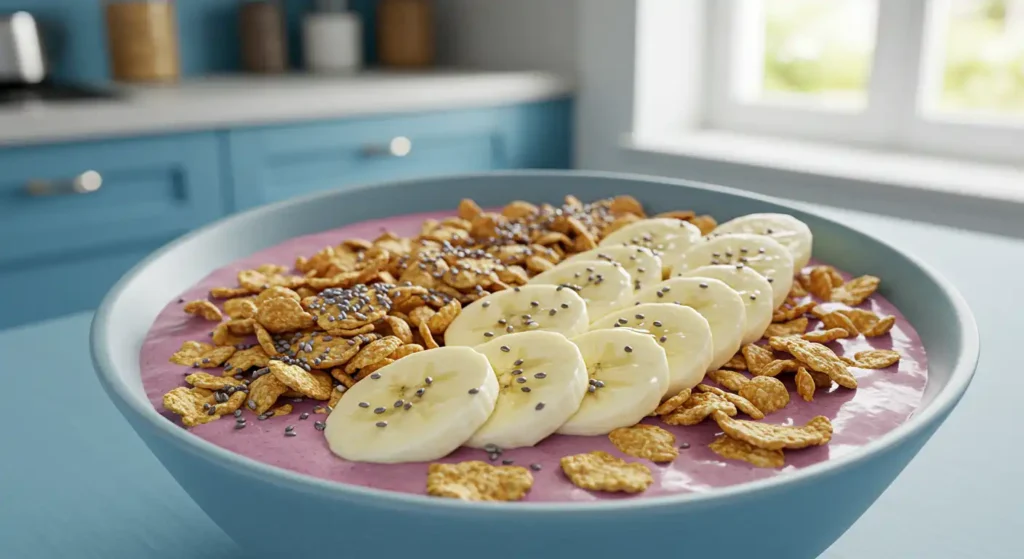
The Science Behind Protein Cereal
How Protein Supports Metabolism
Protein has a high thermic effect, meaning your body burns more calories digesting it compared to carbs or fats. This makes it a metabolism-friendly breakfast choice.
The Role of Protein in Muscle Maintenance
Protein is essential for repairing and maintaining muscle tissue, especially after exercise. It provides an easy, convenient way to replenish these stores.
Balancing Macros for Optimal Energy
Combining protein with healthy fats and complex carbs, as found in many protein cereals, ensures sustained energy release throughout the day.
Conclusion
It stands out as a versatile, convenient, and nutritious option for individuals of all lifestyles. Whether you’re an athlete, a busy professional, or someone looking to make healthier choices, there’s a protein cereal to meet your needs. By understanding how to select and incorporate the best options into your routine, you can elevate your breakfast game and fuel your body for success.
FAQ
1. Are protein cereals keto-friendly?
Yes, many protein cereals are low-carb and suitable for a keto diet. Look for options with minimal net carbs.
2. Can I mix protein cereal with water instead of milk?
You can, but milk or yogurt adds more flavor and nutrients, including additional protein.
3. Are protein cereals suitable for athletes?
Absolutely! Protein cereals support muscle recovery and provide a quick energy source, making them great for active individuals.
4. What’s the shelf life of protein cereals?
Most protein cereals have a long shelf life, but always check the expiration date and store them in a cool, dry place.
5. Can I eat protein cereal before bed?
Yes, especially if you pair it with milk or yogurt. The protein can support muscle repair overnight.
Don’t miss out—explore these irresistible breakfast recipes today!
